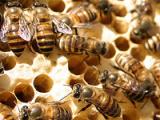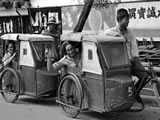What happened that day?
See historic events for any day of the year by entering the date below. Why not try your birthday?
Kiwi of the Week
Today in History

1839 Honey bees brought to NZ
When Mary Bumby landed at the Wesleyan Mission Station at Mangungu, Hokianga, in March 1839 she brought two hives of honey bees from Sydney (where they had been established since 1822). Mary arrived with her brother John, who had been appointed by the Methodist Church as their new Superintendent of Missions in New Zealand. Missionaries were responsible for the introduction of a number of European agricultural practices and apiary was one of them. New Zealand had two native species of bees but neither was suitable for producing honey.
Mary Bumby was born at Thirsk, Yorkshire, in 1811. She and her brother sailed for New Zealand aboard the James in September 1838. She kept a detailed diary from the day she left her Yorkshire home to the birth of her first child in New Zealand three years later. Her diary includes graphic accounts of her first impressions of New Zealand.
Her brother was drowned in June 1840 and later that year Mary married the missionary Gideon Smales. She noted in her diary: ‘well I have made up my mind after much consideration and prayer to become a Missionary's wife. My soul is deeply humiliated at the thought of the responsibility of such a situation.’ They were posted to the Mission Station at Pakanae. In October 1841 their first child was born. It seems that raising children and attending to the work of a missionary's wife left Mary no time for the keeping of a diary.
Mary Bumby died at sea on her way back to England in March 1862.
1946 Jayforce lands in Japan
After Japan’s surrender in August 1945 the New Zealand government agreed to participate in the occupation as part of a Commonwealth force. Under the command of Brigadier Keith Stewart, 4000 New Zealand troops (known as Jayforce) arrived in March 1946 as part of the 40,000-strong British Commonwealth Occupation Force (BCOF). They were to work alongside the United States military forces, which had occupied most of Japan.
The Commonwealth troops had two key tasks: demilitarisation and demobilisation. Jayforce was initially deployed in Yamaguchi prefecture on the southern tip of Honshu and on Eta Jima Island. This was a relatively poor rural area with a population of approximately 1.4 million – a little less than New Zealand’s total population at that time.
The New Zealanders' first task was searching for military equipment. Little was found as Yamaguchi had not had a major military presence during the war. Jayforce also assisted with the repatriation of Japanese coming home and Koreans being returned to their country.
Many members of the New Zealand force were conscripted, and unsatisfactory conditions in Japan added to a sense of resentment. Boredom was a major problem and non-fraternisation rules were progressively relaxed. One consequence of this was a high rate of venereal disease within Jayforce.
When Great Britain and India withdrew from BCOF in 1947 enthusiasm for New Zealand’s ongoing involvement waned. In April 1948 the decision was made to withdraw from Japan, a process that was completed by early 1949.
Around 12,000 New Zealanders served in Jayforce, and 15 were killed in accidents or died of disease. They are buried in the Commonwealth cemetery at Yokohama.
Image: New Zealanders of Jayforce in a bicycle taxi (Timeframes)














